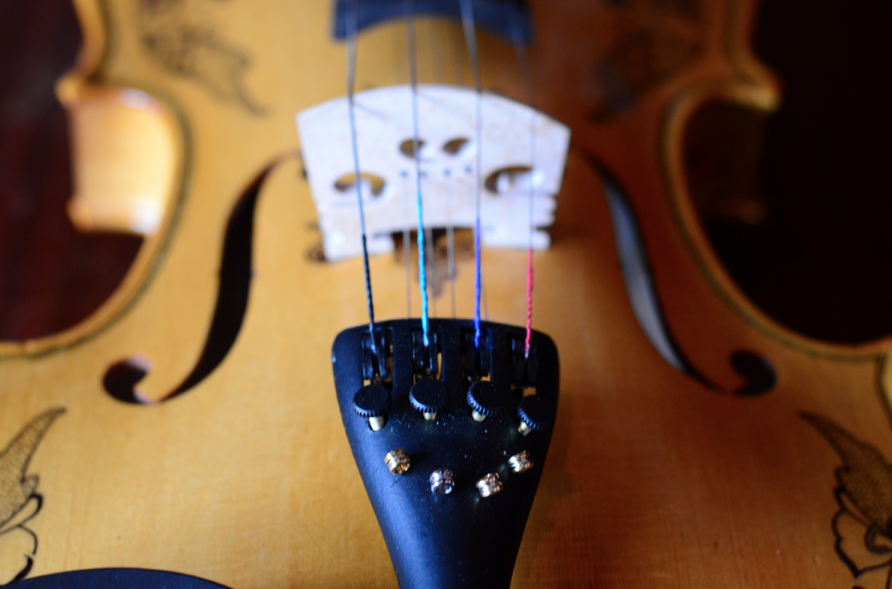Friday, April 25, 2014
It is finished...
Well, my hardanger conversion is finished. I imagine there will be continued adjustments, but the instrument has strings, and it plays (possible video later). The fingerboard is in place (glued with liquid hide glue fron titebond since I didn't want to deal with boiling anything) and the sympathetic strings resonate. In short, it works.
The pegbox is full, and it was a bit of a tight fit to wind each string where it needed to go:
I ended up having to alter my plans and use the friction pegs to tune the sympathetic strings and the geared tuners to hold the primary playing strings - the tension was simply too high on the main strings to be held in place by the friction ukulele pegs. But it doesn't take much to hold the light-guage sympathetics in tune. So I have double fine-tuning capabilities on the main strings (with fine tuners at the bridge) and much less control over the sympathetics, but at least the pegs are all holding now.
Utilizing a simple solution (seen many other places) I simply drilled holes in the tailpiece, and ran the ball ends of my sympathetic strings through:
It's hard to tell in this photograph, but you can just barely see the 4 small-diameter holes I drilled for the sympathetics in the bridge as well.
I'm sure it will continue to require adjustment, but for now, I'm simply glad it's all together, and functions as an instrument.
Thursday, March 20, 2014
Filling the pegbox
After spending some time grinding down the pegs to an appropriate length, I've completely filled the pegbox with the required 8 tuners. Alternating the 90 degree tuners allows for relatively easy access to all of them. I didn't even have to drill any new holes in the pegbox itself - I simply slightly bored out the existing ones to receive the metal tuners. And before you ask, yes, this increases the weight of the scroll side a bit, but hopefully it will still be easily playable.
Thursday, February 20, 2014
Finishing the ink and tuners
It took me some time to finalize the designs, and then to actually execute them. The curved center bouts are particularly difficult to get a good angle. And every surface is curved, so there are some unique challenges to getting a good looking design. Add to this that I was essentially freehanding this - and trying my best to get symmetry as well... Needless to say this step took a bit of time and concentration.
After using the ink, I added a coat or two of the spar varnish over the ink to 'set' the design. Utilizing a blend of traditional and less traditional designs, I ended up with a fully 'illustrated' Hardanger:
And the back:
One of the primary logistical problems in converting a standard violin to a Hardanger fiddle is dealing with the size of the pegbox. I've seen solutions ranging from literally sawing off the scroll and replacing it with a headstock replete with a set of mandolin tuners, to using smaller pegs from an oud and trying to squeeze in 4 per side... The method I'll be attempting (and refining I'm sure) is to utilize a combination of angled/geared guitar style tuners, and small friction pegs designed for a ukulele. Hopefully by alternating both these styles I'll leave myself enough room to actually turn the pegs. I figure I'll put the main 4 strings on the friction pegs, and mainly tune with the fine tuners, and run the sympathetic strings to the geared tuners (since they'll be fixed at the tailpiece).
Of course the side wall of a pegbox is much thinner than a headstock, so for both tuners it requires grinding them down to be substantially shorter, and to drill new holes for the strings to be wound. Though it takes a while, a regular bench grinder will do the trick.
Subscribe to:
Comments (Atom)










